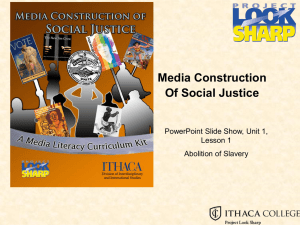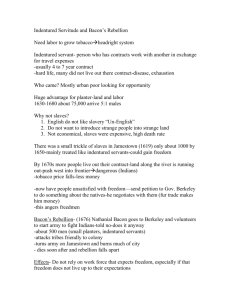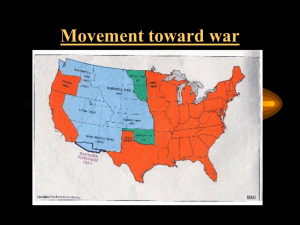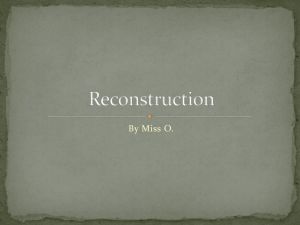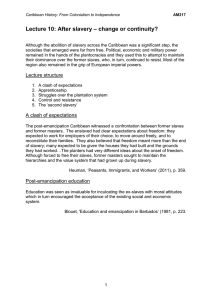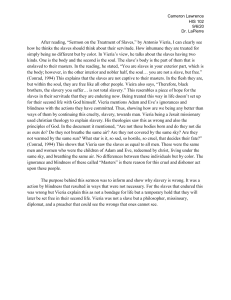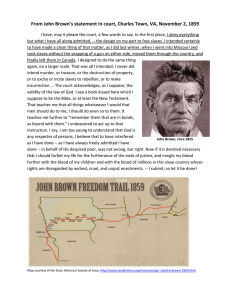Chapter 3- Section 2: The Agricultural South pgs. 72
advertisement
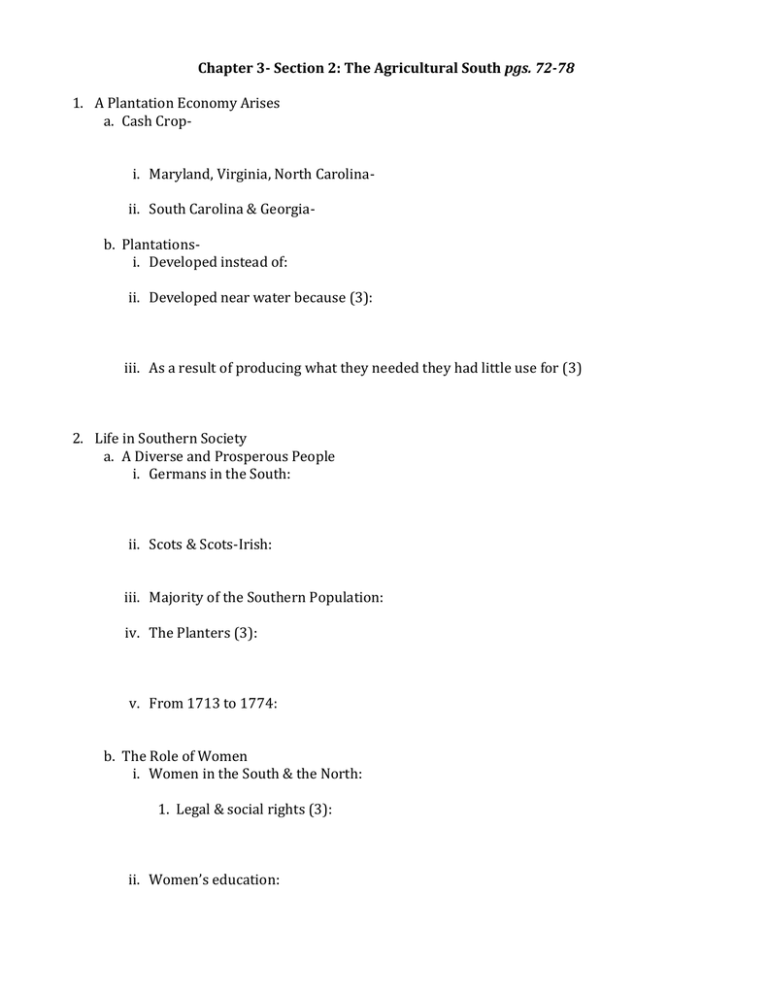
Chapter 3- Section 2: The Agricultural South pgs. 72-78 1. A Plantation Economy Arises a. Cash Cropi. Maryland, Virginia, North Carolinaii. South Carolina & Georgiab. Plantationsi. Developed instead of: ii. Developed near water because (3): iii. As a result of producing what they needed they had little use for (3) 2. Life in Southern Society a. A Diverse and Prosperous People i. Germans in the South: ii. Scots & Scots-Irish: iii. Majority of the Southern Population: iv. The Planters (3): v. From 1713 to 1774: b. The Role of Women i. Women in the South & the North: 1. Legal & social rights (3): ii. Women’s education: iii. Daily life (6): iv. Women of the planter class: c. Indentured Servants i. Life in Europe: ii. In the 1600siii. After 1630- 1. Why? 2. As a result: 3. Slavery Becomes Entrenched a. The Evolution of Slavery i. In the early days1. Problems with the Natives (2): ii. Economics slavery vs. indentured servants (4): iii. By 1690- iv. By 1750b. The European Slave Trade i. African slaves in Jamaica & Barbados (2): ii. Triangular trade- the three way process1. From New England to Arica2. In Africa3. West Indies4. West Indies to New Englandiii. The Middle Passage 1. Definition: 2. Why was it called the Middle Passage? 3. Describe the journey: iv. Slavery in the South 1. Number of slaves who worked in the fields2. Percentage who worked in the house or as artisansa. Duties of Domestic Slaves (3)b. Jobs of artisans (3)3. In Virginia Courts4. Africans Cope in Their New World a. Culture and Family i. Ways slaves maintained their cultural heritage (3): ii. In South Carolina and Georgia- iii. Ring Shout- b. Resistance and Revolt: i. Ways slaves resisted without violence (3)- ii. Stono Rebellion- 1. Result: iii. Between 1736 and 1801 in Virginia- iv. Runaway slaves and Native Americans- v. Difference between North and South-
